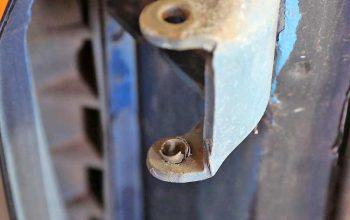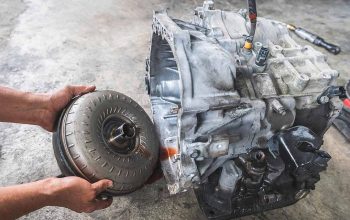The key difference between a driving belt and a timing belt is that the belt transfers rotational power from the engine to the various components of the car that need it. In contrast, The timing belt is a specific type of drive belt responsible for synchronizing the rotation of the crankshaft and the camshaft(s).
If you are interested in learning the key differences between these two belts, this guide on driving belts vs. timing belts will cover it all. From where they are typically located inside the car engine, the cost of replacement, replacement time, and even what materials are used in making them.
What Is The Purpose Of A Timing Belt In A Car?
The timing belt is designed to keep the engine’s valves in time with the pistons. It is responsible for synchronizing the engine’s pistons with the crankshaft. This ensures that the valves open and close at the correct times, which is essential for efficient engine operation. The timing belt is usually made from a tough synthetic rubber material, and it’s designed to withstand high temperatures and lots of wear and tear as it is subjected to a great deal of stress. So it must be replaced at the recommended interval to avoid engine damage.
What Does A Driving Belt Do?
The driving belt is responsible for powering the engine’s accessories. This includes the water pump, the alternator, and the power steering pump. The driving belt is usually made from tough leather, rubber, or fabric material, and it must be very strong to handle high engine speeds. Drive belts also need to be replaced at the recommended interval, but they are not as critical to the engine’s operation as the timing belt.
Driving Belt Vs. Timing Belt: What are the Key Differences?
What are the key differences between the driving belt vs. timing belt, two critical parts in a car?
In short, the timing belt synchronizes the engine’s pistons with the crankshaft and keeps the engine’s timing in sync. In contrast, the driving belt is responsible for powering the engine’s accessories.
Here is a table of different key features compared between the driving and timing belt.
| Differences | Driving Belt | Timing Belt |
| Location | Outside of the engine | Inside of the engine |
| Cost Of Replacement | $90 to $200 | $350 to $600 |
| Replacement Time | 60,000–100,000 miles | 60,000 miles – 150,000 miles |
| Materials Used | Plastic, leather, cotton fabric, rubber belt | Rubber, polyurethane or neoprene |
Driving Belt Vs. Timing Belt: Where Are They Located?
Drive Belt
The drive belt is located outside of the engine. It’s usually located on the front of the engine, but it may also be on the side or in the back. The drive belt’s job is to power the engine accessories- such as the alternator, air conditioning compressor, power steering pump, and water pump.
Timing Belt
As for the location of the timing belt, it is located inside the engine, typically on the front of the engine. It is connected to the crankshaft (which turns the pistons) and the camshaft (which opens and closes the valves). The timing belt’s job is to ensure the crankshaft and camshaft turn at the correct speed and sync with each other.
Driving Belt Vs. Timing Belt: When To Replace Them?
Timing Belt
If the timing belt snaps or tears apart for some reason, the engine will stop running and must be rebuilt. For this reason, it’s important to replace the timing belt when the manufacturer recommends it. The replacement time of your timing belt will depend on the model of your car, but you can expect the replacement time of your timing belt anywhere from 60,000 to 100,000 miles.
Driving Belt
Unlike the timing belt, the driving belt does not directly affect the engine’s operation. However, if the belt breaks, you will lose power to the accessories. For this reason, it’s important to check the driving belt regularly and replace it when it shows signs of wear, such as cracks or fraying. But as a rule of thumb the driving belt should be replaced every 50,000 to 60,000 miles.
Driving Belt Vs. Timing Belt: What Is The Difference in Their Replacement Cost?
Driving Belt Replacement Cost
If the drive belt snaps or breaks, it can cause serious damage to your engine, so it’s crucial to replace it as soon as possible. But how much will it cost you to replace a drive belt?
The cost of replacing a drive belt will vary depending on several factors, such as the model and where you have the work carried out. However, as a rough guide, you can expect to pay anywhere from $90 to $200 for a new drive belt, plus any associated labor costs.
Timing Belt Replacement Cost
If you have a standard car, you’ll likely need a serpentine belt, which can cost anywhere from $50 to $100. If you have a more luxury vehicle, you may need a timing belt, which is more expensive and can cost upwards of $350 to even $600.
Of course, the best way to get an accurate estimate for your particular car is to take it to a mechanic or dealership and have them take a look. They’ll be able to tell you exactly what type of belt you need and give you a price estimate.
In the meantime, you can also check your car’s owner’s manual to see if there’s any information on the recommended type of drive belt and replacement interval.
Can The Drive Belt Snapping Affect Power Steering?
A serpentine belt is the main drive belt in most modern cars, and a loose or failing serpentine belt can cause a host of problems in your car, including decreased fuel economy, loss of power steering, and overheating.
If your car has power steering, a failing serpentine belt can cause that to fail. You’ll notice a difference in how the steering feels if this happens.
Another common sign of a failing serpentine belt is squealing from under the hood of your car. If you hear this, it’s important to check the belt as soon as possible.
Conclusion
Is the driving belt the same as the timing belt? No, the timing belt and the driving (or serpentine) belt each serve a specific but different purpose.
So If your car is due for a new belt, don’t put it off – get it taken care of and enjoy peace of mind knowing your car is in good working order. While it may not be the most exciting repair, replacing a drive belt is an important part of keeping your car running smoothly.



